コバギボウシは茎先で紡錘形の蕾が横向きに連なり、釣鐘形の花が俯くように咲きます。花被が6裂、雄しべが6本、小さな舟形の苞が1枚。
Hosta sieboldii has spindle-shaped buds arranged horizontally at the end of the stem, and bell-shaped flowers bloom downward. The flowers have six lobes, six stamens, and one small boat-shaped bract.
【仮名】コバギボウシ, ギボウシ(コバギボウシ)
【和名】小葉擬宝珠, 擬宝珠(小葉擬宝珠)
【英名】Hosta sieboldii, Hosta (Hosta sieboldii), Plantain Lily (Hosta sieboldii)
【学名】Hosta sieboldii
【誕生】07/ 09, 07/ 17
【開花】06, 07, 08月
【花色】White, Purple
コバギボウシ
コバギボウシの概要
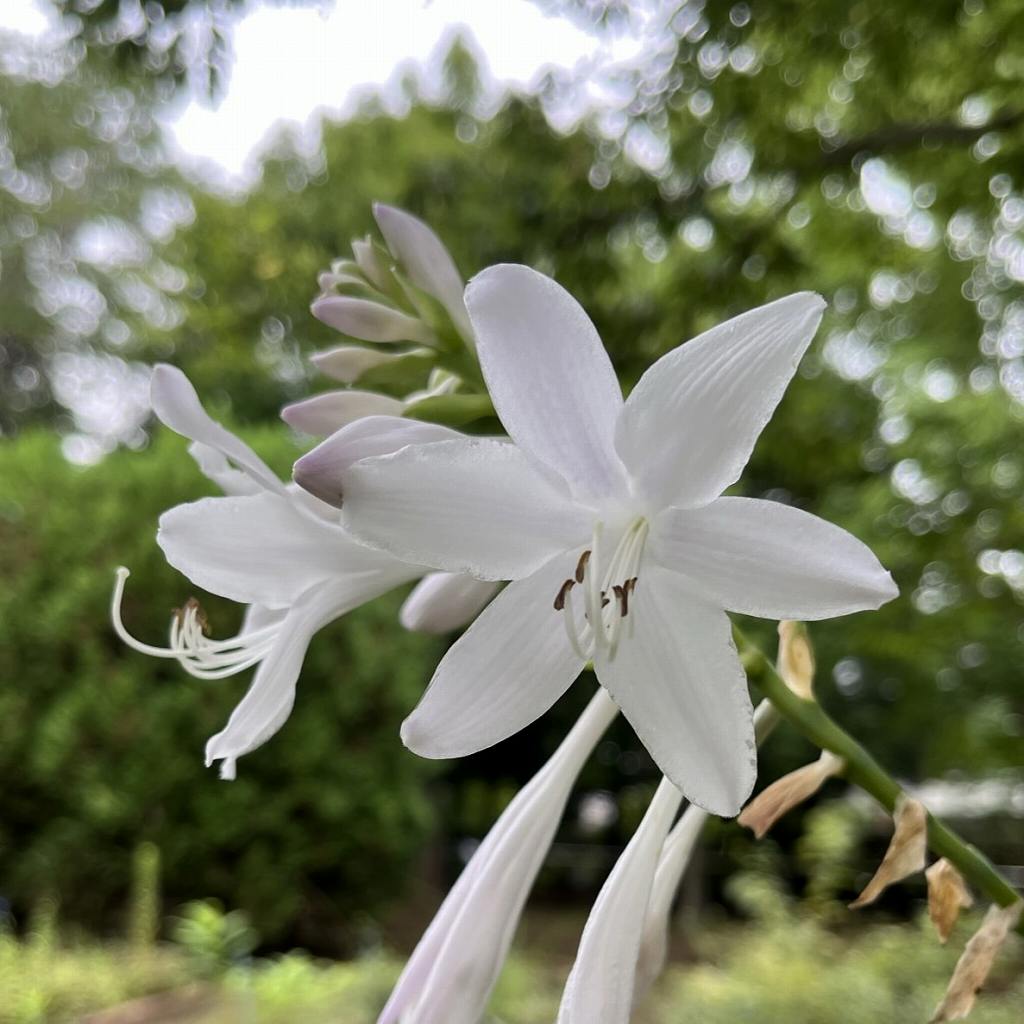
コバギボウシはクサスギカズラ科ギボウシ属の多年草です。日本では北海道から本州、四国、九州まで、国外では千島列島、樺太に分布。陽当たりがよく、湿った野原で自生しています。花色の濃淡、葉の形状など、変異に富んで、地方名もたくさん。花言葉は「静かな愛」などです。
コバギボウシの名前
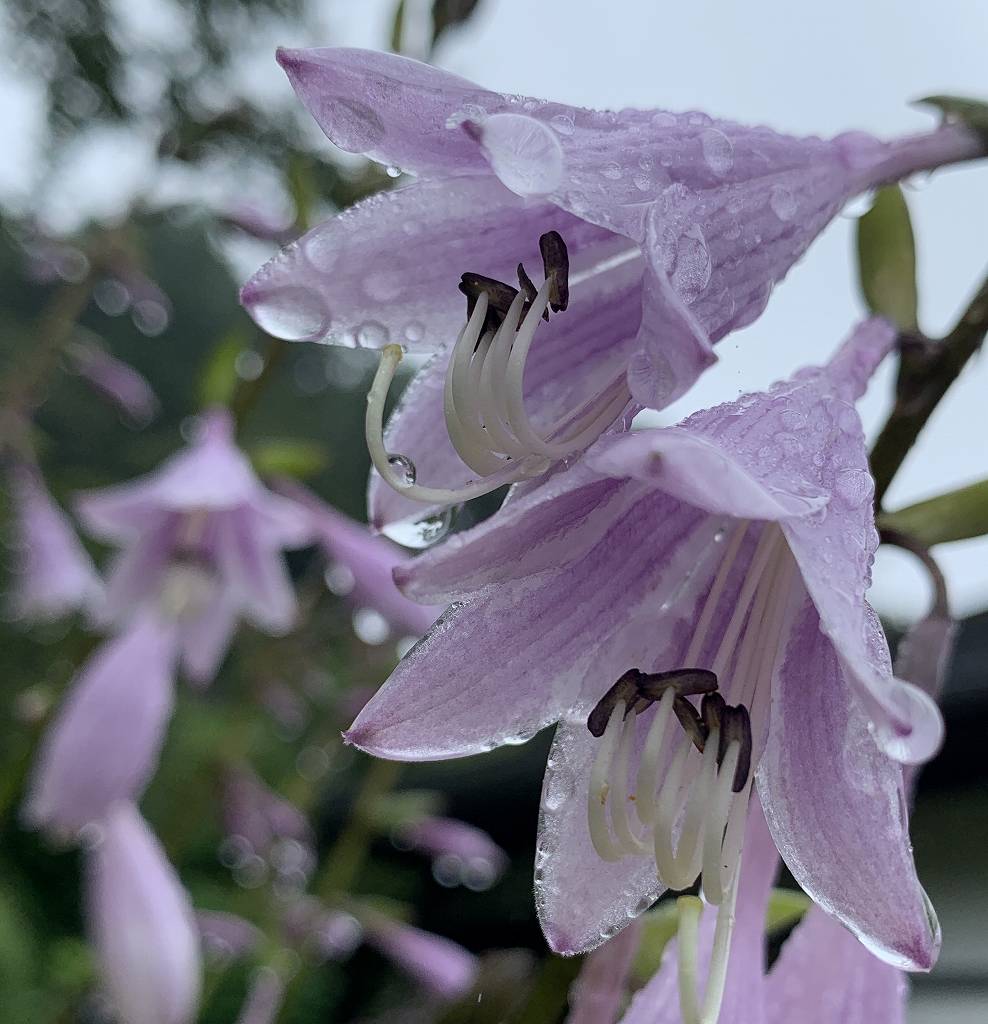
コバギボウシの名前の由来は、葉の小さな「擬宝珠」です。擬宝珠は伝統的な装飾造形で、花蕾の形状が似ているから。ラテン語の属名ホスタはクロアチアの植物学者ホストへの献名です。種小名シーボルディはドイツの博物学者シーボルトへの献名。いずれも18~19世紀の医師です。
コバギボウシの姿形
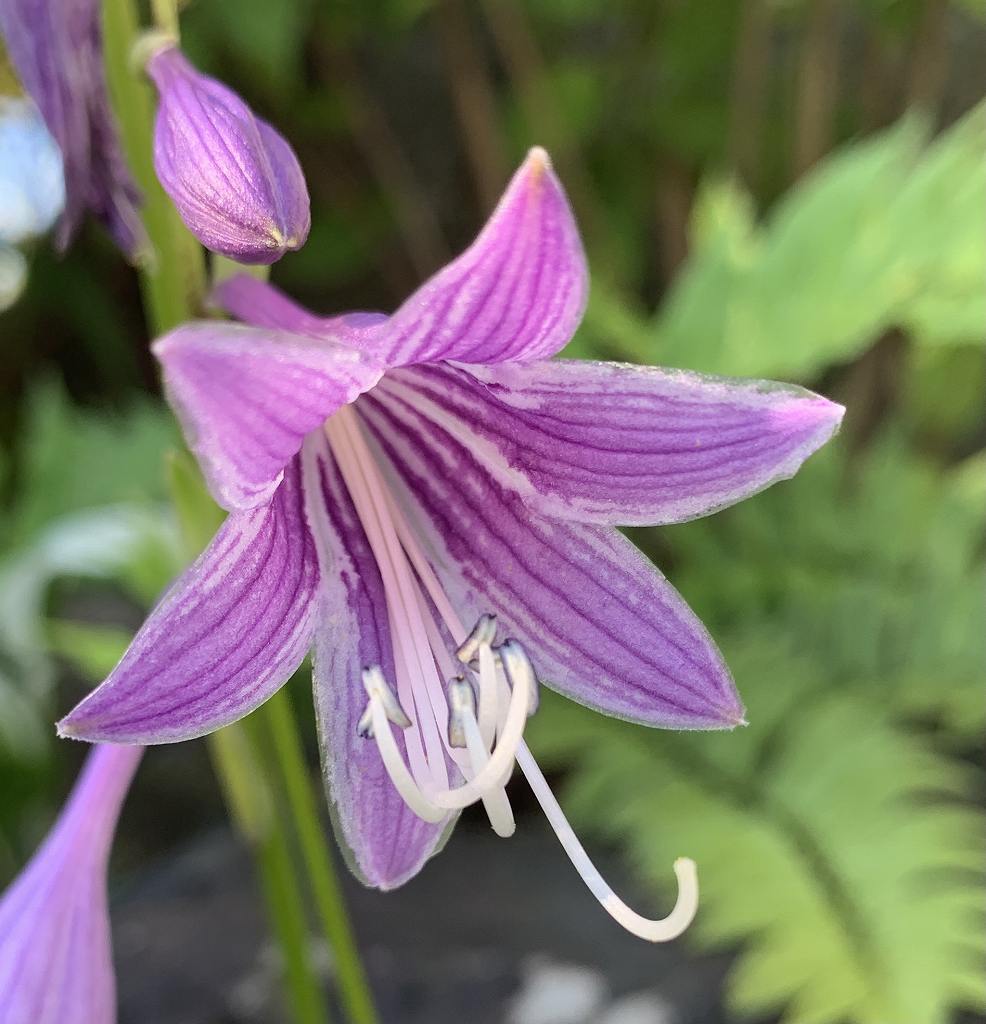
コバギボウシの葉は先端の尖った卵形で根生。基部から先端まで葉脈が何本も走ります。葉と葉の間から花茎が直立。その先端で紡錘形の花蕾が横向きに連なり、釣鐘形の花が俯くように咲きます。花被が6裂、雄しべが6本、小さな舟形の苞が1枚。蒴果が熟して種子を散らします。
コバギボウシの近縁
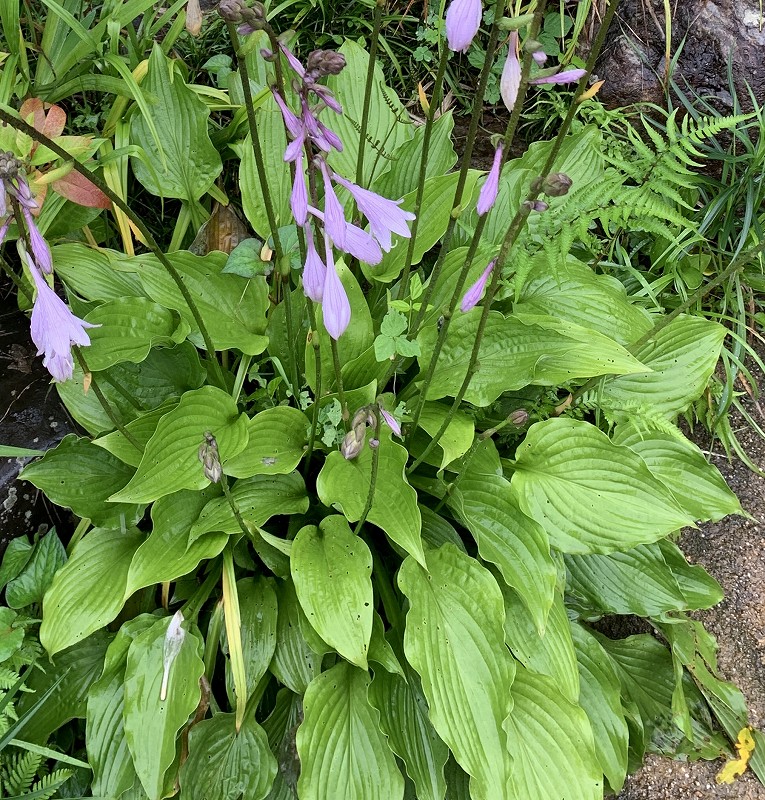
コバギボウシの近縁種「大葉擬宝珠」は北海道から本州の中部地方まで分布。小葉擬宝珠に似てはいるものの、茎も葉も花も大ぶりです。「うるい」とも呼ばれ、昔から食べられてきた山菜。若葉は灰汁が少なく、天ぷら、お浸し、和えもの、炒めもの、漬けものなどでいただきます。
Hosta sieboldii
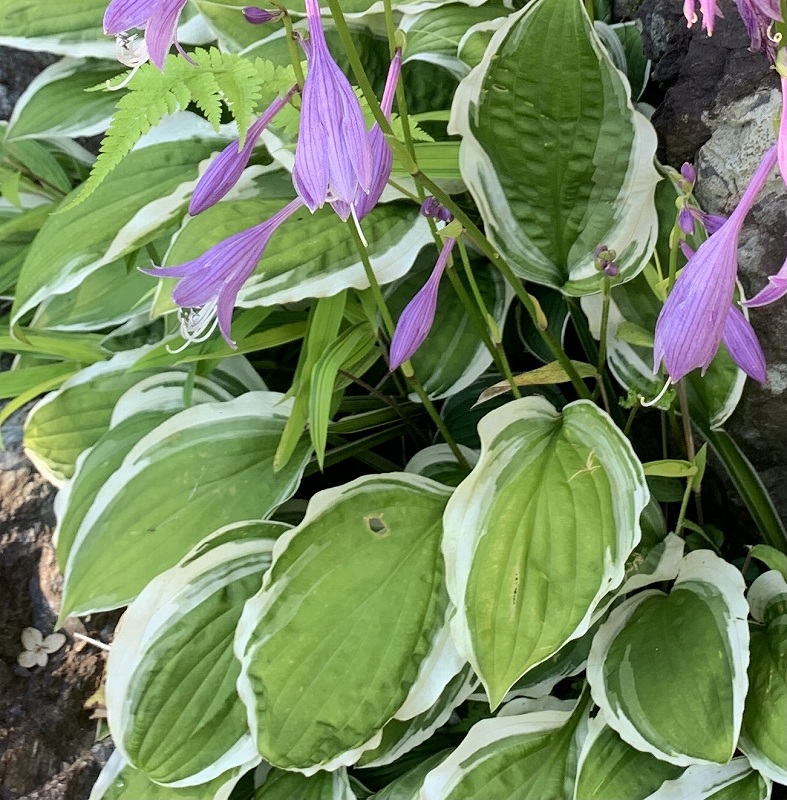
Hosta sieboldii is a perennial plant of the Asparagaceae family. It is distributed in Japan from Hokkaido to Honshu, Shikoku, and Kyushu, and overseas to the Kuril Islands and Sakhalin. It grows naturally in sunny, moist fields. It has a wide variety of flower colors and leaf shapes, and has many local names. The flower language is “quiet love”.
The Japanese name Hosta sieboldii means “Hosta with small leaves”. The Japanese name Hosta means traditional decorative shape because the flower buds are similar. The Latin genus name Hosta is a tribute to the Croatian botanist Nicolaus Thomas Host. The specific name sieboldii is a tribute to the German naturalist Philipp Franz Balthasar von Siebold. Both were physicians in the 18th and 19th centuries.
The leaves of Hosta sieboldii are egg-shaped with pointed tips, and grow on the base. There are many veins running from the base to the tip. A flower stalk grows upright between the leaves. At the tip of the stalk, spindle-shaped flower buds grow horizontally, and bell-shaped flowers bloom downward. The flower has six lobes, six stamens, and one small boat-shaped bract. The capsules ripen and scatter seeds.
A closely related species of Hosta sieboldii, “Hosta sieboldiana,” is distributed from Hokkaido to the Chubu region of Honshu. Although it looks similar to Hosta sieboldii, the stems, leaves, and flowers are large. It is a wild vegetable that has been eaten since ancient times. Young leaves have little bitterness and can be enjoyed as tempura, boiled in soy sauce, in salads, stir-fries, or pickled dishes.


